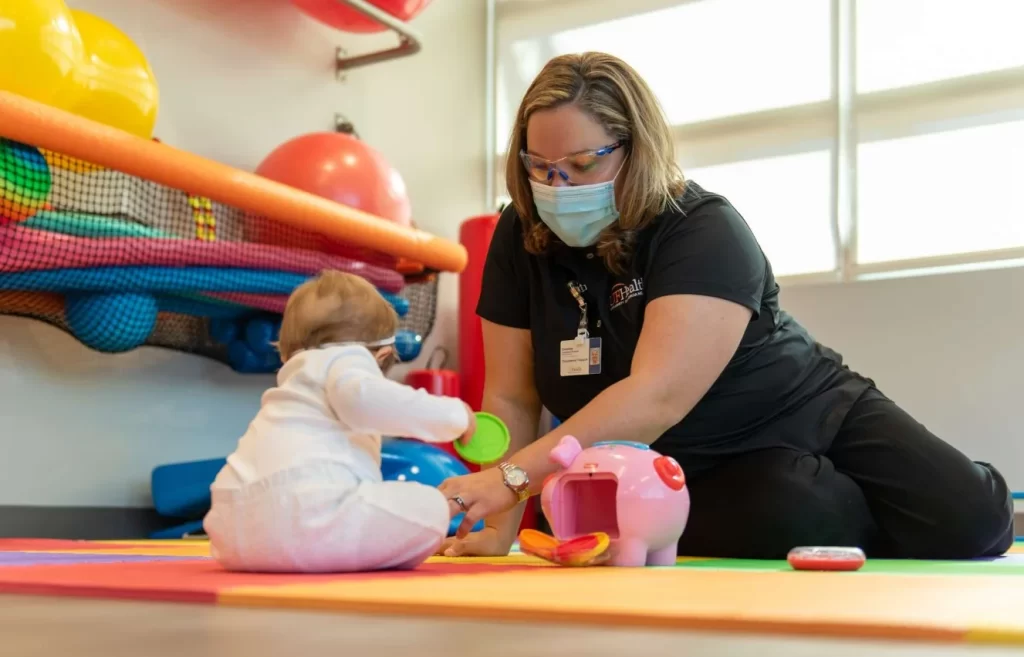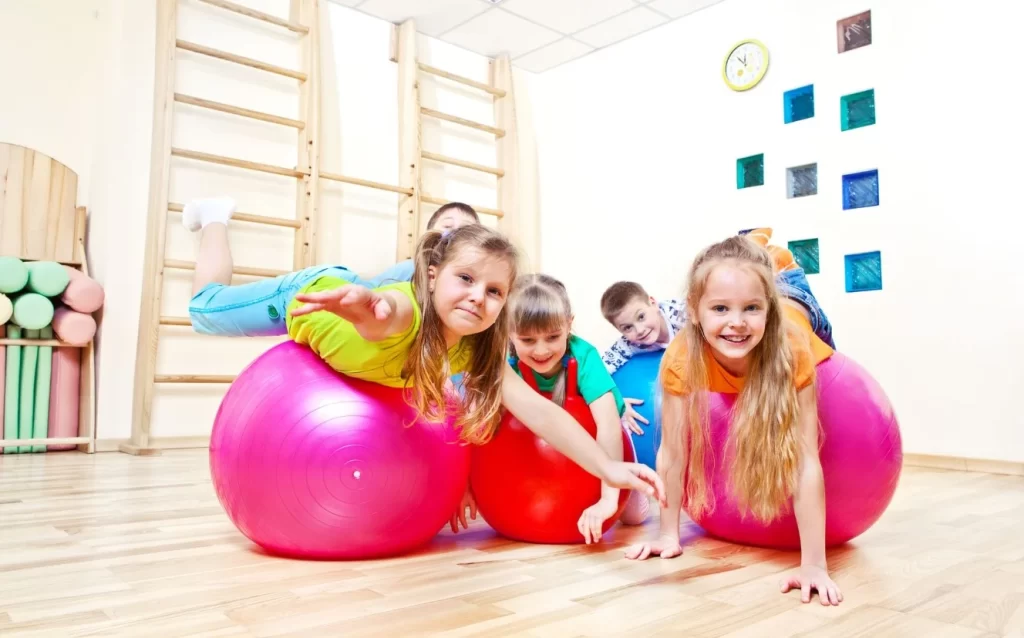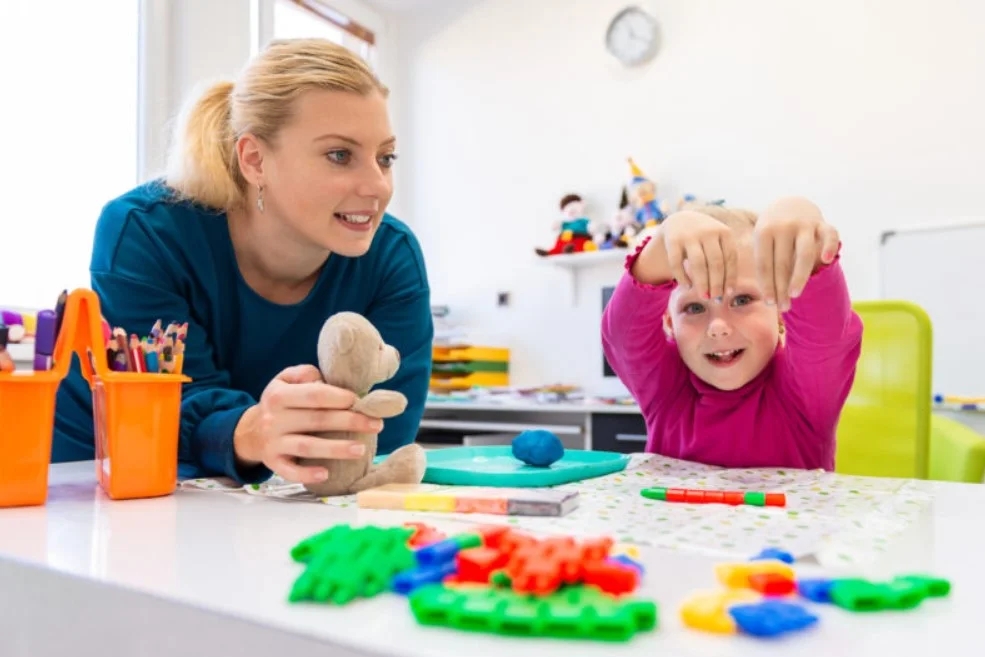How Pediatric Occupational Therapy Can Help Special Children
All children need to be granted an opportunity to accomplish their objectives. But, such ability becomes more impossible for children with any disability to experience. Facing the difficulties of early life children sometimes need special care to succeed. This is where Pediatric Occupational Therapy, comes into play.
Children, Pediatric OT involves training a child to acquire skills that are needed to succeed in family, school, and community settings. It is especially focused on teaching kids self-care skills, playfulness, and learning techniques. Since they are in charge of the children’s care, pediatric occupational therapists collaborate with the families to develop individualized treatment programs that are tailored to the individual requirements of each kid.
By closely examining Pediatric OT, we will delve into its mission, the great significance it attaches to addressing sensory processing, developmental problems and how it offers pediatric patients and their families the needed hope and moral support when they are at their most desperate moments.
What Is Pediatric Occupational Therapy?
Occupational therapy for children is considered as a section of healthcare services, particularly addressed for providing the children the requirements of activities and tasks of a daily basis striving towards success. The level of complexity and functionality of adaptive aids can vary a lot, from self-care practices, such as dressing and eating, to writing and social integration skills. The occupational therapists who operate in the presence of children are educated to come up with solutions to various developmental and sensory problems, to ensure that the little ones engage in all aspects of their lives that are both at home and school. It is worth noting that their role cannot be underestimated in any manner.
Pediatrics occupational therapy (OT) includes a healthcare professionals who help disabled and delayed kids to perform activities of daily living. It is thorough in its scrutiny with the recognition of peculiar problems in every development stage, and it aligns interventions to mental, physical, emotional, and social development.
Individuals that work as occupational therapists work with children of different age groups from infants to teenagers to assist them in realizing the abilities needed to do the daily personal chores such as dressing, eating, washing etc, playing and attending to them during the learning process.
Purpose of Occupational Therapy for Children

The main aim of occupational therapy for kids is to teach them to achieve their freedom and prosperity in every day life. It often covers a great number of aims that depend on a particular case.
- Enhancing Motor Skills: All in all, OTs help to develop motor skills such as fine and gross motor, enabling kids to draw, write, and play sports amongst other things more efficiently.
- Promoting Self-Care: Therapy assists children in building self-help skills, e. g. grooming, dressing, and feeding oneself, so they can become progressively self-reliant.
- Supporting Sensory Processing: Learners with sensory processing disorder have occupational therapy which helps them to response to sensory input more simply and this helps them to become anxious free and attentive.
- Fostering Social Skills: Occupational therapists teach kids social skills, such as communication, exchange and working together. They help students to get along with others.
- Enhancing Cognitive Abilities: To treat children with the cognitive disabilities one of the therapy options is develop skills like organizing, planning and problem-solving.
- Managing Behavioral Issues: OT develops social adaptability by giving the child skills on managing difficult behavior in others.
What Does a Pediatric Occupational Therapist Do?
Occupational therapists professionals (OTs) are core professionals who help children reach developmental milestones and conquer obstacles among other things.
- Assessment: First of all, they get to know a child’s strengths and weaknesses, and define what excels and what has to be ousted. The observation and use of norm-referenced assessments are among the major approaches to this assessment.
- Goal Setting: Then the therapist works with the child’s family and other professionals on designing individualized goals of therapy suitable for the child after a thorough assessment.
- Treatment Planning: An occupational therapist’s rehabilitation treatment plans are personalized, often employing exercises, activities and interventions that are intended to be in line with the stated goals.
- Intervention: Therapists work with children in person, leading them step-by-step through practice sessions and lessons that can improve the necessary developmental skills.
- Education and Training: Additionally, they familiarize families and the caregiver with methods to aid the child’s growth at home providing them with the techniques and exercises for practice.
- Monitoring and Adjusting: In order to get the greatest outcomes, the therapist modifies the treatment plan as necessary while monitoring the child’s progress at each stage of therapy.
Different Types of Occupational Therapy & Its Benefits

The occupational therapy extends to the diverse occupational sectors which are each a stand alone specialized focusing on their own benefits. The following is the Classification of OT along with its benefits:
- Pediatric Occupational Therapy: The major training of this specialty helps children in acquiring life skills which would be equally helpful in their studies by combating their physical, cognitive, sensory and social scars.
- Hand Therapy: These people are those that work with patients, who are either hand injury or shoulder injury, which may cause weakness and pain in the upper extremity. Their role is not just to improve that function, but to reduce the pain as well.
- Mental Health Occupational Therapy: Helping people with mental diseases overcome daily obstacles, improve their coping mechanisms, and advance their general well-being is the aim of this section.
- Geriatric Occupational Therapy: It is aimed at the elderly population, this combined approach of therapy allows them to continue living independently, correspond with age-related changes, and improve the general quality of their life.
- Rehabilitative Occupational Therapy: Simple examples include stroke and head injury rehabilitation, where the target is to regain the skills that have been lost in the process, making it possible for people to go back to normal daily routines.
The gains of occupational therapy are both the change and the renovation which wide up the blossoming of independence and total well being and which surpasses the eloquence as the transmission is carried the long way.
Which Common Conditions That Occupational Therapists Treat the Most?
Occupational therapists work with a wide range of conditions, including:
- Developmental Delays: Addressing long-term impairments in verbal and cognitive development, as well as fine and gross motor abilities.
- Autism Spectrum Disorder: Cooperating together with the kids who have autism and trying to develop social and sensory skills.
- Sensory Processing Disorder: Helping kids learn to more efficiently manage sensory input.
- Cerebral Palsy: Reducing their chances of social isolation and getting them back on the road by throttling the speed.
- ADHD: Supporting children with attention and focus challenging in school and other daily tasks.
- Hand Injuries: Handling the injury or disorders of the hand and upper extremities is among the areas this service covers.
- Stroke and Brain Injury: Helping people to achieve their self-confidence and independence by regaining the skills which are lost after having a neurological condition.
Occupational Therapy Vs Physical Therapy - How It Benefits Children
Occupational therapy and physical therapy, although related, have been designed to cater to distinct purposes. Although they are in certain ways similar. Though they may still yield common results. In the context of pediatric care, here’s how they benefit children differently:
- Physical Therapy (PT): PT mainly deals with enhancing of one’s physical proficiencies and motor skills. It provides solutions to matters of strength, flexibility, balance and coordination. Such as physical therapists who cope with kids that have difficulty of walking or who need rehabilitation after a sports injury.
- Occupational Therapy (OT): OT falls into the category of a wider range of functional skills required for daily living that includes fine motor skills, sensory processing and activities of daily living. Occupational therapy professionals tackle concerns of self-care, social bonds, and cognitive development. Through OT, a child can be taught how to handle tasks related to, for example, writing, dressing, and participating in school life.
On some occasions, the kids could get both occupational therapy and physical therapy as long as their specific requirements and targets are taken into consideration. By blending the different therapies along a multidisciplinary pathway, a holistic approach to children’s overall well-being and development can be established.
FAQs
A child might need occupational therapy if they have difficulties with daily activities, fine or gross motor skills, sensory processing, or developmental delays that impact their ability to participate in school and daily life.
Occupational therapists in schools help kids by addressing fine motor skills, sensory processing issues, attention and focus, and organization. They aim to improve a child’s ability to participate in classroom activities and engage with peers.
Occupational therapy can benefit children’s mental health by promoting self-regulation, emotional well-being, and social skills. It helps children develop coping strategies and build confidence in their abilities.
Occupational Therapy for Kids focuses on improving a child’s ability to perform daily activities and fine motor skills, while pediatric physiotherapy concentrates on enhancing a child’s gross motor skills and physical functioning.
Examples of occupational therapy interventions include teaching a child with autism social skills, helping a child with ADHD improve focus and attention, and assisting a child with fine motor delays in handwriting.
Occupational therapy can be effective for individuals with autism. It helps improve sensory processing, social skills, and daily living skills. The success of therapy varies from person to person but can yield positive outcomes.

